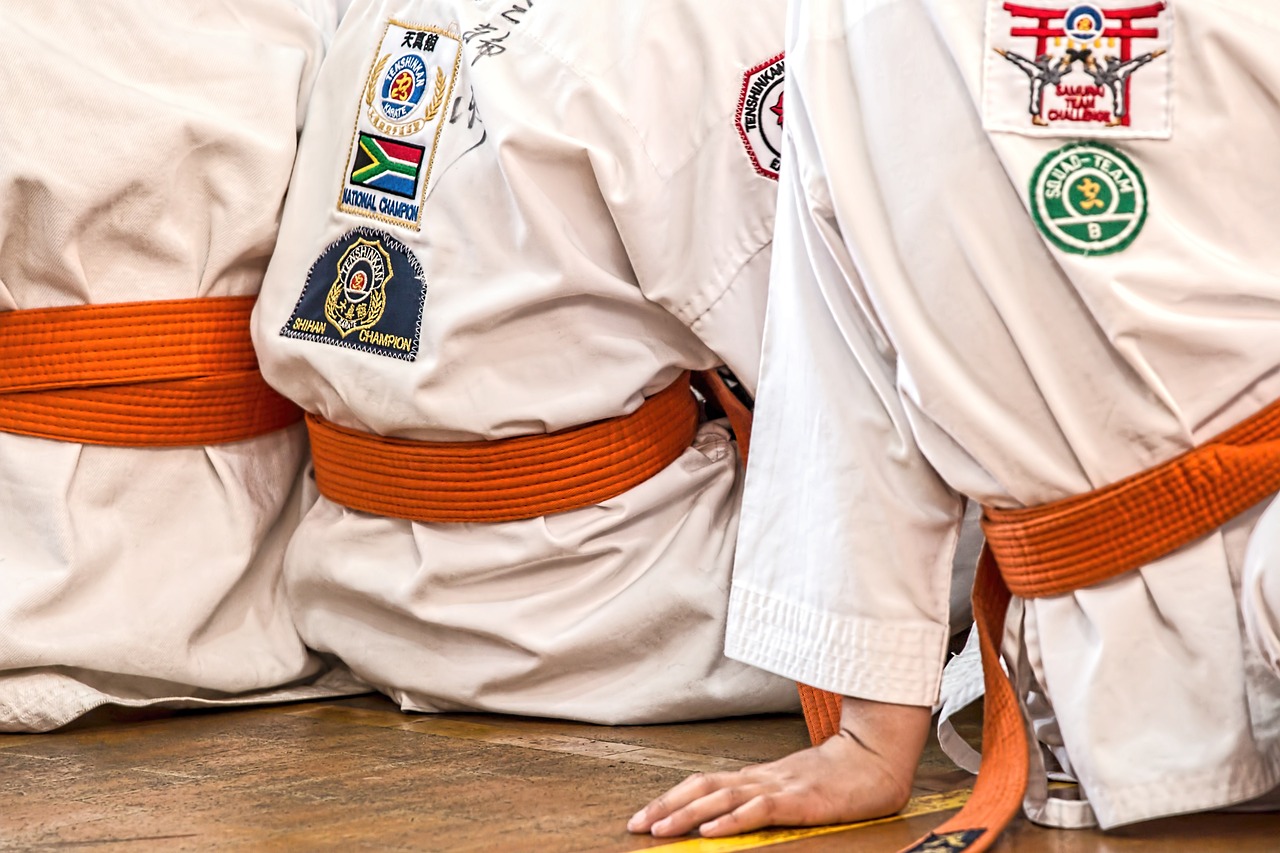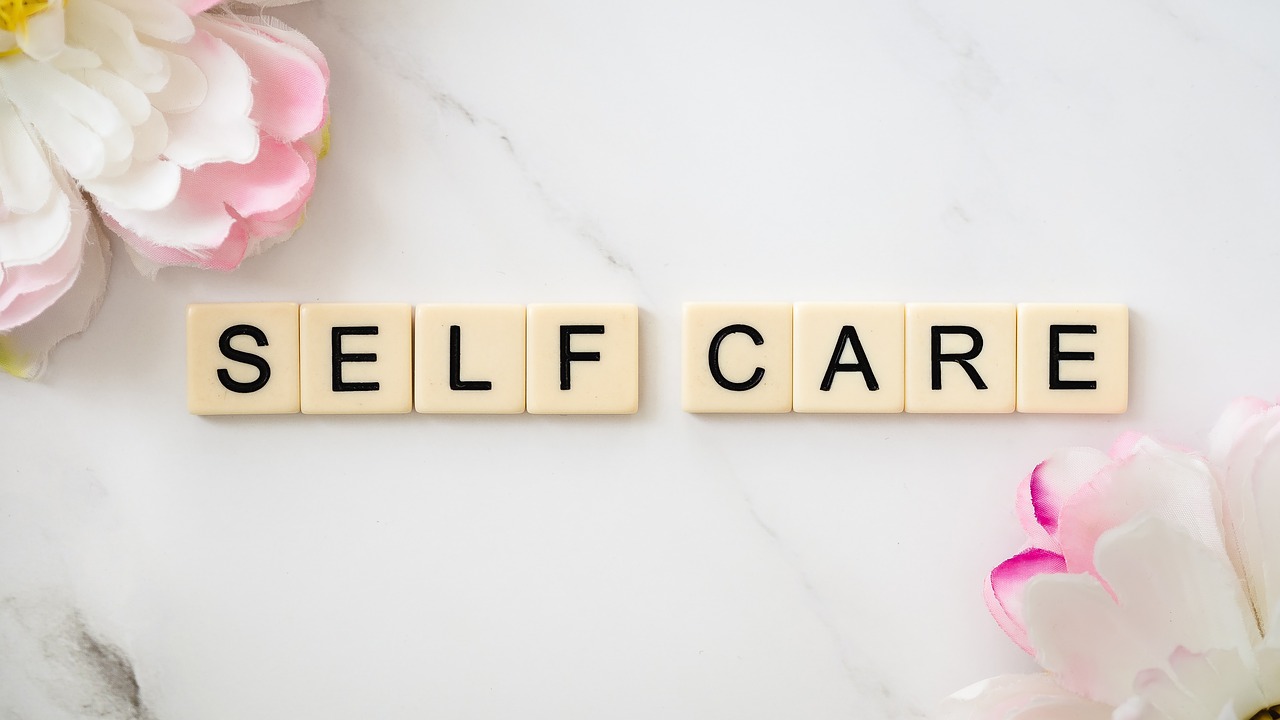Better Safe than Sorry - Why Self-Defense Techniques are Must-Haves
In a world where unpredictability reigns, the phrase "better safe than sorry" takes on a whole new meaning. Have you ever found yourself in a situation where you felt vulnerable? Perhaps you’ve walked alone at night or encountered a heated argument in a public space. These moments can be unsettling, and that’s where self-defense techniques come into play. They are not just skills; they are lifelines that empower individuals to take control of their safety and well-being.
Imagine this: you’re walking down a quiet street, and suddenly you sense someone following you. Panic sets in, but what if you had the tools and knowledge to handle such a situation? Self-defense techniques provide that confidence boost, equipping you with the ability to react rather than freeze in fear. This isn’t just about physical strength; it’s about mental preparedness and awareness. By learning self-defense, you’re not just protecting your body; you’re also fortifying your mind against the uncertainties of life.
Moreover, self-defense isn’t just for the vulnerable; it’s for everyone. From young children to the elderly, the ability to defend oneself is a vital skill that transcends age and gender. As crime rates fluctuate and the world becomes increasingly unpredictable, understanding self-defense has become a necessity rather than a luxury. It’s about creating a sense of security in your daily life, promoting a culture where individuals feel empowered to stand up for themselves and others.
Many people think of self-defense as a last resort, but it’s so much more than that. It’s about prevention and awareness. By learning to recognize potential threats and understanding how to avoid dangerous situations, you can significantly reduce your risk of encountering violence. Self-defense training teaches you to be vigilant and aware of your surroundings, which is a critical component of personal safety.
In essence, self-defense techniques are must-haves because they offer a comprehensive approach to personal safety. They blend physical training with mental preparedness, creating a holistic skill set that empowers individuals. Whether you’re looking to boost your confidence, improve your fitness, or simply feel more secure in your daily life, self-defense training is an invaluable investment. So, why wait? Embrace the power of self-defense and take the first step towards a safer, more confident you!
- What are the basic self-defense techniques I should learn? Basic techniques often include situational awareness, striking, escaping holds, and de-escalation tactics.
- Is self-defense training suitable for all ages? Absolutely! Self-defense training can be adapted for children, adults, and seniors, making it accessible for everyone.
- How long does it take to learn self-defense? The time varies depending on the individual and the training frequency, but many people start feeling more confident after a few weeks of consistent practice.
- Can self-defense training improve my fitness? Yes, many self-defense classes incorporate physical conditioning, which can enhance your overall fitness level.
- Do I need to be physically strong to learn self-defense? No, self-defense techniques often rely on technique and strategy rather than brute strength.

The Importance of Self-Defense
In a world where unpredictability seems to be the norm, understanding the significance of self-defense has never been more critical. The reality is that anyone can find themselves in a situation where their safety is at risk, and being equipped with self-defense techniques can be the difference between a frightening experience and a manageable one. The need for self-defense knowledge transcends age, gender, and background, making it a universal skill set that empowers individuals to take control of their personal safety.
Consider this: the streets we walk, the places we visit, and even our homes can harbor unexpected dangers. While it's essential to remain optimistic and trust the goodness in people, a healthy dose of caution is equally important. Self-defense isn't just about physical techniques; it's about cultivating a mindset that prioritizes awareness and preparedness. This means being alert to your surroundings, recognizing potential threats, and knowing how to respond effectively.
Moreover, self-defense training fosters a sense of community and connection. When individuals come together to learn these techniques, they not only gain valuable skills but also build friendships and support networks. This camaraderie can be incredibly empowering, as participants share experiences and encourage one another in their self-defense journeys. Whether it’s a group class or a one-on-one session, the shared goal of personal safety brings people together in a meaningful way.
Here are a few compelling reasons why self-defense is essential today:
- Awareness and Preparedness: Learning self-defense heightens your awareness of your environment, enabling you to spot potential dangers before they escalate.
- Empowerment: Knowing you have the skills to defend yourself can significantly boost your self-esteem and confidence, allowing you to navigate life with greater assurance.
- Physical Fitness: Engaging in self-defense training often leads to improved physical fitness, enhancing your overall health and well-being.
In conclusion, the importance of self-defense cannot be overstated. It’s not just about the techniques you learn; it’s about the mindset you develop—the ability to stay calm under pressure and make informed decisions. As we continue to face various challenges in our daily lives, equipping ourselves with self-defense knowledge is a proactive step towards ensuring our safety and well-being.
Here are some common questions regarding self-defense that might help clarify its importance:
- What age is appropriate to start learning self-defense? There is no specific age; self-defense can be beneficial for children, teenagers, and adults alike.
- Do I need to be physically fit to learn self-defense? Not necessarily. Self-defense classes are designed for all fitness levels, and the focus is on technique rather than brute strength.
- Can self-defense training help in non-physical situations? Absolutely! Many self-defense courses teach de-escalation techniques and how to avoid confrontations altogether.

Types of Self-Defense Techniques
When it comes to self-defense, understanding the various techniques available is essential for anyone looking to empower themselves. Self-defense is not a one-size-fits-all solution; rather, it encompasses a range of methods tailored to different situations and personal abilities. Whether you're looking to defend yourself against an attacker or just want to feel more secure in your daily life, knowing the right techniques can make all the difference. So, what are the types of self-defense techniques you should consider? Let's dive in!
One of the most popular forms of self-defense is martial arts. These disciplines not only teach you how to defend yourself but also help improve your physical fitness, discipline, and mental focus. Some of the most recognized martial arts styles include:
- Karate: A striking art that emphasizes punches, kicks, and defensive blocking techniques.
- Judo: Focuses on throws and grappling, perfect for close-quarters situations.
- Krav Maga: A practical self-defense system developed for the Israeli military, known for its efficiency and effectiveness in real-world situations.
Each of these styles offers unique benefits. For instance, Karate is fantastic for developing striking power and agility, while Judo teaches you how to use an opponent's force against them, making it particularly useful in a physical confrontation. Krav Maga, on the other hand, is designed for real-life self-defense scenarios, teaching practitioners to respond to threats quickly and effectively.
In addition to martial arts, there are practical self-defense strategies that everyone should learn. These strategies often focus on situational awareness—being aware of your surroundings and recognizing potential threats before they escalate. For example, learning how to read body language can help you identify when someone may have ill intentions. De-escalation techniques are also crucial; knowing how to diffuse a tense situation verbally can often prevent the need for physical confrontation altogether.
Moreover, self-defense isn't just about physical techniques. It's also about mental preparedness. Understanding how to assess a situation and make quick decisions can empower you to act swiftly and effectively. This mental training can be just as critical as physical training, as it helps you to stay calm under pressure and think clearly when it matters most.
In summary, the world of self-defense is rich with options, each designed to prepare you for various situations. Whether you choose to engage in martial arts or focus on practical strategies, the key is to find what resonates with you personally. Remember, the best self-defense technique is one that you feel comfortable and confident using!
Q: Do I need to be physically fit to learn self-defense?
A: Not at all! Self-defense classes cater to all fitness levels. The aim is to build your skills and confidence over time.
Q: Can self-defense techniques really help me in a dangerous situation?
A: Yes, learning self-defense can significantly increase your chances of protecting yourself. It equips you with the skills and mindset needed to handle potential threats.
Q: How long does it take to learn effective self-defense techniques?
A: The time it takes varies by individual and the complexity of the techniques. However, most people can learn basic self-defense skills within a few classes.
Q: Is it necessary to take classes, or can I learn self-defense online?
A: While online resources can be helpful, taking in-person classes with qualified instructors is highly recommended for effective learning and hands-on practice.

Martial Arts Overview
When we think about self-defense, martial arts often come to mind as a powerful tool for empowerment and safety. Martial arts are not just about learning how to throw a punch or execute a kick; they embody a philosophy that promotes discipline, respect, and mental fortitude. With a myriad of styles available, each with its unique techniques and principles, martial arts offer something for everyone, making them an invaluable asset in the realm of self-defense.
From the graceful movements of Taekwondo to the strategic prowess of Aikido, martial arts can enhance both physical and mental capabilities. They teach practitioners to be aware of their surroundings, respond to threats with composure, and develop a sense of confidence that spills over into daily life. The beauty of martial arts lies in their adaptability; whether you are looking for a rigorous workout or a means of self-protection, there is a style that can cater to your needs.
Moreover, martial arts training often includes elements of self-discipline and mental focus, which are crucial not just in combat situations but in everyday challenges. As practitioners progress through various belts and ranks, they experience a sense of achievement that boosts their self-esteem. This journey is not merely about physical prowess; it is about cultivating a mindset that embraces challenges and strives for improvement.
Here's a quick overview of some popular martial arts styles and their self-defense benefits:
| Martial Art | Focus | Self-Defense Benefits |
|---|---|---|
| Karate | Striking Techniques | Effective for quick, powerful strikes and defending against attacks. |
| Judo | Throws and Grappling | Utilizes an opponent's weight and momentum to gain control. |
| Krav Maga | Real-World Self-Defense | Focuses on practical techniques for real-life situations. |
| Brazilian Jiu-Jitsu | Ground Fighting | Teaches how to defend against larger opponents through leverage. |
In addition to physical benefits, martial arts training also fosters a strong sense of community. Many dojos and training centers create a supportive environment where individuals can learn from each other, share experiences, and grow together. This camaraderie often leads to lasting friendships, making the journey of learning self-defense not just a personal endeavor but a shared experience that enriches lives.
Ultimately, martial arts are more than just a means of self-defense; they are a holistic approach to personal development. Whether you are a beginner or have some experience, engaging in martial arts can profoundly impact your life, instilling a sense of empowerment that goes far beyond the dojo. So, are you ready to take that first step toward mastering a martial art and embracing the confidence that comes with it?
- What age is appropriate to start martial arts training? Many martial arts schools offer classes for children as young as four years old, while adults can start at any age.
- Do I need to be fit to begin martial arts? Absolutely not! Martial arts training is designed to improve your fitness level over time, regardless of your starting point.
- How long does it take to become proficient in martial arts? Proficiency varies by individual and style, but with consistent practice, many see significant improvement within a few months.
- Is martial arts training safe? While there is always a risk of injury in any physical activity, proper training, supervision, and protective gear minimize risks significantly.

Karate
Karate, a martial art that has gained immense popularity worldwide, is much more than just a means of self-defense; it is a way of life. Originating from Japan, Karate emphasizes striking techniques such as punches, kicks, knee strikes, and elbow strikes, making it a versatile and effective form of self-defense. Practicing Karate not only equips individuals with the skills to protect themselves but also instills a sense of discipline, respect, and focus. Imagine being able to defend yourself while simultaneously improving your physical fitness and mental resilience—Karate offers just that!
One of the most appealing aspects of Karate is its accessibility. People of all ages and fitness levels can participate, making it an inclusive option for anyone looking to enhance their self-defense skills. Whether you are a teenager wanting to boost your confidence or an adult seeking a new fitness challenge, Karate can meet you where you are. The training typically involves a combination of kata (forms), sparring, and self-defense techniques, allowing practitioners to develop a well-rounded skill set.
In terms of effectiveness, Karate teaches practitioners how to use their body as a weapon, leveraging speed and precision over brute strength. This is particularly useful in self-defense scenarios where the element of surprise and quick reflexes can make all the difference. For example, a well-timed kick can incapacitate an attacker, giving you the opportunity to escape to safety. Additionally, the mental training that accompanies physical practice helps individuals stay calm under pressure, which is crucial in any threatening situation.
Moreover, Karate is structured around a belt system that signifies a practitioner's level of expertise. This system not only provides motivation for students but also fosters a sense of community and belonging within the dojo (training hall). As students progress through the ranks, they gain not only technical skills but also a deeper understanding of the philosophy behind Karate. This journey of self-improvement can be incredibly empowering, reinforcing the idea that with dedication and hard work, anyone can achieve their goals.
In conclusion, Karate is a powerful self-defense technique that offers a wealth of benefits beyond mere physical protection. Its combination of striking skills, mental discipline, and community support makes it an excellent choice for anyone looking to enhance their self-defense capabilities. So, if you're considering taking up a martial art, why not give Karate a try? You might just find that it changes your life in more ways than you ever imagined!
For those curious about how to start their Karate journey, many local dojos offer introductory classes. It's essential to find a qualified instructor who can guide you through the basics and help you build a strong foundation. Remember, the journey of a thousand miles begins with a single step, and in the case of Karate, that step could lead you to a more confident and empowered you!

Judo
Judo is not just a sport; it’s a powerful self-defense technique that emphasizes the principles of leverage, balance, and timing. Originating from Japan in the late 19th century, judo translates to "the gentle way," which is quite fitting given its focus on using an opponent's force against them. Imagine facing an aggressor who is larger and stronger; judo teaches you to turn their strength into your advantage. Through a series of throws, holds, and ground techniques, practitioners learn to neutralize threats effectively.
One of the key aspects of judo is its emphasis on throws, which are designed to unbalance the opponent and bring them to the ground. This can be particularly useful in self-defense situations. For instance, if someone attempts to push or shove you, you can use their momentum to execute a throw, allowing you to escape or gain control. The beauty of judo lies in its adaptability; it’s not merely about brute strength but rather about technique and strategy.
Training in judo involves rigorous physical conditioning and mental discipline. As practitioners progress, they not only learn techniques but also develop essential skills such as:
- Situational Awareness: Understanding your environment and being able to read potential threats.
- Self-Control: Maintaining composure under pressure, which is crucial in any self-defense scenario.
- Confidence: Gaining the self-assurance that comes from mastering a complex skill set.
Moreover, judo promotes respect and discipline, which are fundamental values in martial arts. Students bow to their instructors and each other, fostering a sense of community and mutual respect. This environment not only enhances learning but also cultivates a mindset that values safety and self-improvement.
In terms of practical applications, judo is effective in various real-life situations. For example, if someone attempts to grab you from behind, judo techniques can help you break free and counterattack. It’s about being proactive rather than reactive, giving individuals the tools they need to protect themselves. The training also includes falling techniques, which are essential for minimizing injury during a confrontation. By learning how to fall safely, practitioners can avoid serious injuries, even in high-stress situations.
In conclusion, judo is more than just a martial art; it’s a comprehensive self-defense system that empowers individuals to protect themselves with confidence and skill. Whether you're looking to improve your physical fitness, learn valuable self-defense techniques, or simply want to engage in a rewarding activity, judo offers something for everyone. So why not step onto the mat and discover the gentle way for yourself?
Q: Is judo suitable for all ages?
A: Yes! Judo can be practiced by individuals of all ages, from children to seniors. Many dojo offer classes tailored to different age groups.
Q: How long does it take to learn judo?
A: The time it takes to learn judo varies by individual. With consistent practice, many people can grasp the basics within a few months, while mastering advanced techniques may take years.
Q: Do I need special equipment to start judo?
A: Initially, you can start with comfortable athletic wear. However, as you progress, you may want to invest in a judo gi (uniform) to train effectively.
Q: Can judo help improve my physical fitness?
A: Absolutely! Judo training enhances strength, flexibility, and cardiovascular fitness, making it an excellent workout.

Practical Self-Defense Strategies
When it comes to self-defense, having practical strategies in your toolkit is essential. It's not just about knowing how to throw a punch or execute a perfect kick; it's about being aware of your surroundings and reacting appropriately to potential threats. Imagine walking down a street and feeling that little tingle in your gut; that's your intuition kicking in. This is where situational awareness becomes your best friend. By staying alert and paying attention to your environment, you can often avoid dangerous situations before they escalate.
Another vital aspect of self-defense is the art of de-escalation. Instead of jumping straight into a confrontation, learning how to defuse a tense situation can be incredibly beneficial. Think of it as a chess game; sometimes, the best move is to step back and reassess. For example, if someone confronts you aggressively, using calm language, maintaining a non-threatening posture, and even employing humor can help to ease tensions. Remember, the goal is to avoid physical conflict whenever possible.
In addition to awareness and de-escalation, knowing how to respond to potential threats is crucial. This doesn't mean you have to be a martial arts expert; basic self-defense techniques can be incredibly effective. For instance, if someone grabs your wrist, simple techniques like twisting your arm to break free can be surprisingly effective. Here are a few practical responses to common threats:
- Wrist Grabs: Rotate your wrist towards the attacker's thumb to escape.
- Chokes: Use your elbows to strike the attacker's ribs or face, creating space to escape.
- Being Followed: Change your route, enter a public place, or confront the follower directly.
Moreover, practicing these strategies regularly can help engrain them into your muscle memory. Just like learning to ride a bike, the more you practice, the more instinctual your reactions will become in a real-life scenario. Joining a self-defense class can provide you with the opportunity to practice these techniques in a safe environment, allowing you to build confidence and skill.
In summary, practical self-defense strategies encompass a combination of awareness, de-escalation, and effective response techniques. By integrating these elements into your daily life, you not only prepare yourself for potential threats but also cultivate a mindset of confidence and resilience. Remember, being prepared is half the battle won!
Q1: What is the best self-defense technique for beginners?
A1: For beginners, techniques that focus on basic escapes from grabs and holds, such as those found in Krav Maga or Brazilian Jiu-Jitsu, are highly effective. These techniques emphasize practicality and can be learned quickly.
Q2: How often should I practice self-defense techniques?
A2: Ideally, practicing self-defense techniques at least once a week can help reinforce your skills. Regular practice keeps your reflexes sharp and your confidence high.
Q3: Can self-defense training help with confidence?
A3: Absolutely! Self-defense training not only equips you with skills to protect yourself but also boosts your self-esteem and confidence, making you feel more empowered in everyday situations.

Benefits of Learning Self-Defense
Learning self-defense techniques is not just about knowing how to throw a punch or escape a hold; it encompasses a wide range of benefits that can profoundly impact your life. In a world where personal safety can often feel compromised, the ability to defend oneself becomes a vital skill. But what exactly are the benefits of acquiring these techniques? Let’s dive into the myriad ways learning self-defense can enhance your life.
First and foremost, one of the most significant benefits of self-defense training is the boost in confidence it provides. Imagine walking down the street with your head held high, knowing you have the skills to protect yourself if needed. This newfound confidence can spill over into other areas of your life, from personal relationships to professional opportunities. Self-defense training empowers individuals to face challenges head-on, fostering a sense of control and resilience in everyday situations.
Moreover, engaging in self-defense classes is a fantastic way to improve your physical fitness. Many of the techniques involved require strength, agility, and endurance, leading to an overall enhancement of your health. For instance, training in martial arts can help you build muscle, improve your cardiovascular health, and enhance your flexibility. As you progress, you may find yourself feeling more energized and capable of tackling daily activities with ease. The physical benefits often become apparent quickly, making the training not only practical but also enjoyable.
In addition to confidence and fitness, learning self-defense offers mental and emotional benefits as well. The discipline required in training can lead to improved focus and concentration, which can be beneficial in both personal and professional contexts. Furthermore, overcoming the challenges that come with learning self-defense techniques can foster a sense of accomplishment and personal growth. It's akin to climbing a mountain; each step may be difficult, but reaching the summit brings an exhilarating sense of achievement.
Furthermore, self-defense training promotes situational awareness, a crucial skill in today’s fast-paced world. Being aware of your surroundings and recognizing potential threats can help you avoid dangerous situations before they escalate. This heightened awareness is not just about physical self-defense; it extends to understanding social dynamics and effectively reading the room. It’s like having a sixth sense that keeps you alert and prepared.
To summarize, here are some key benefits of learning self-defense:
- Boosts Confidence: Knowledge of self-defense techniques enhances self-esteem.
- Improves Physical Fitness: Training promotes overall health and well-being.
- Enhances Mental Focus: Discipline from training leads to improved concentration.
- Increases Situational Awareness: Awareness of surroundings helps prevent potential threats.
As you can see, the benefits of learning self-defense are extensive and multifaceted. Whether it's the physical aspects, the psychological empowerment, or the practical skills gained, self-defense training is a valuable investment in your personal safety and overall well-being. So why wait? Embrace the journey of learning self-defense and unlock a world of confidence and strength!
Q: Do I need to be physically fit to start learning self-defense?
A: Not at all! Self-defense classes cater to all fitness levels, and training can actually help improve your fitness over time.
Q: How long does it take to learn effective self-defense techniques?
A: The time it takes varies depending on the individual and the class structure, but even a few sessions can provide you with valuable skills.
Q: Is self-defense training suitable for everyone?
A: Yes! Self-defense is beneficial for individuals of all ages and backgrounds, and many classes are designed with inclusivity in mind.
Q: What should I look for in a self-defense class?
A: Look for qualified instructors, a supportive environment, and a curriculum that meets your personal goals.

Boosting Confidence
One of the most profound benefits of learning self-defense techniques is the significant boost in confidence it provides. Imagine walking down the street, and instead of feeling anxious or vulnerable, you feel empowered and in control. This transformation is not just about physical skills; it permeates every aspect of your life. When you know how to protect yourself, you’re not just gaining a set of skills; you’re also instilling a sense of security within yourself that radiates confidence.
Self-defense training teaches individuals to trust their instincts and react calmly in stressful situations. This newfound ability to handle potential threats translates into other areas of life. For example, think about how many times you’ve faced challenges at work or in personal relationships. The assertiveness developed through self-defense training can help you tackle these situations head-on, making you more decisive and self-assured.
Moreover, the community aspect of self-defense classes cannot be overlooked. Training with others fosters a sense of camaraderie and support. You’re not just learning techniques; you’re sharing experiences and encouraging one another. This environment cultivates a strong sense of belonging, which further enhances confidence. As you progress through your training, you’ll likely find yourself setting and achieving goals, which is a powerful confidence booster.
Here’s how self-defense training boosts confidence:
- Skill Acquisition: Mastering techniques gives you a sense of achievement.
- Physical Fitness: Improved fitness levels contribute to a positive self-image.
- Stress Management: Learning to stay calm under pressure enhances overall resilience.
In essence, the journey of learning self-defense is transformative. It’s not just about learning how to throw a punch or escape a hold; it’s about becoming a more confident version of yourself. And who wouldn’t want that? With enhanced self-esteem, you’ll find yourself more willing to take on challenges, whether in social situations, at work, or in personal endeavors. So, if you’ve ever considered taking a self-defense class, remember, it’s not just about safety; it’s about stepping into your power and embracing your inner strength.
Q1: Can anyone learn self-defense techniques?
A1: Absolutely! Self-defense techniques can be learned by individuals of all ages and fitness levels. The key is to find a class that suits your needs and abilities.
Q2: How long does it take to become proficient in self-defense?
A2: Proficiency varies from person to person, but with regular practice, many individuals start feeling more confident in their skills within a few months.
Q3: Is self-defense training physically demanding?
A3: While some self-defense classes can be physically demanding, there are also options that focus more on strategy and mental preparedness, making them accessible to everyone.
Q4: What should I look for in a self-defense class?
A4: Look for qualified instructors, a safe and supportive environment, and a curriculum that aligns with your personal goals.

Physical Fitness
Engaging in self-defense training is not just about learning how to protect yourself; it also plays a significant role in enhancing your overall . Think of it as a two-for-one deal: you get to learn valuable skills while simultaneously improving your body. Self-defense techniques require a blend of strength, agility, and endurance, which means you’ll be working on multiple aspects of fitness all at once. This holistic approach can lead to noticeable improvements in your health and well-being.
When you participate in self-defense classes, you typically engage in a variety of physical activities that promote cardiovascular health, muscle strength, and flexibility. For instance, the warm-up routines often include dynamic stretches and aerobic exercises that get your heart pumping and muscles warmed up. This not only prepares you for the more intense training ahead but also contributes to your overall fitness levels. Over time, you may find that you have more energy throughout your day, which is a fantastic perk!
But what exactly does self-defense training do for your body? Here are some key benefits:
- Strength Building: Many self-defense techniques require you to use your body weight effectively, which helps in building muscle strength. Techniques like grappling in Judo or striking in Karate can significantly enhance your upper and lower body strength.
- Improved Agility: Self-defense training often involves quick movements and changes in direction. This not only makes you more agile but also improves your coordination and balance, which are crucial for avoiding falls or injuries.
- Enhanced Flexibility: Many martial arts emphasize stretching and flexibility exercises. Regular practice can lead to increased range of motion, making daily activities easier and reducing the risk of injuries.
- Weight Management: The intensity of self-defense classes can help burn calories and aid in weight management. Combined with a balanced diet, this can lead to a healthier body composition.
In addition to these physical benefits, self-defense training can also contribute to mental fitness. The focus and discipline required in mastering techniques can sharpen your mind and improve your concentration. It’s like a workout for your brain as well! When you learn to anticipate moves and react quickly, you develop a sharper awareness of your surroundings, which is a crucial aspect of personal safety.
Moreover, the social aspect of participating in self-defense classes can’t be overlooked. Training with others fosters a sense of community and support, which can be incredibly motivating. You’re not just working out alone; you’re part of a team that encourages each other to push through challenges, both physically and mentally. This camaraderie can keep you engaged and committed to your fitness journey.
In conclusion, self-defense training is a powerful way to enhance your physical fitness while gaining essential skills for personal safety. So, whether you're looking to get fit, learn how to defend yourself, or simply want to try something new, enrolling in a self-defense class could be one of the best decisions you ever make!
Q1: Do I need to be fit to start self-defense training?
A1: Absolutely not! Self-defense classes cater to all fitness levels. The training itself will help you improve your fitness over time.
Q2: How often should I practice self-defense techniques?
A2: Consistency is key! Aim for at least one to two classes per week, and practice techniques at home when possible to reinforce your skills.
Q3: Can self-defense training help with stress relief?
A3: Yes! Physical activity, including self-defense training, is a great way to relieve stress and improve your mood through the release of endorphins.
Q4: Is self-defense training suitable for all ages?
A4: Yes! Self-defense classes are designed to accommodate individuals of all ages, from children to seniors, with age-appropriate techniques and training methods.

Choosing the Right Self-Defense Class
When it comes to learning self-defense, choosing the right class can feel as daunting as facing an opponent in a sparring match. With so many options available, how do you ensure that you’re selecting a class that meets your needs and helps you achieve your personal safety goals? First and foremost, it’s essential to consider your own objectives. Are you looking to learn practical techniques for self-defense, or are you more interested in the fitness aspect of martial arts? Understanding your goals will guide you in selecting a class that aligns with what you hope to achieve.
Next, take a close look at the instructor qualifications. The experience and background of the instructor can make a world of difference in your learning experience. A qualified instructor should not only have a solid understanding of self-defense techniques but also possess the ability to teach these skills effectively. Look for instructors who have experience in real-life self-defense situations, as they can provide insights that go beyond just the techniques. Here are some key points to consider regarding instructor qualifications:
- Experience: Ensure the instructor has a strong background in self-defense or martial arts.
- Certification: Check if they are certified by a recognized organization.
- Teaching Style: Observe how they communicate and engage with students.
Additionally, the class structure and environment play a crucial role in your learning journey. A well-structured class should balance technique instruction with practical application, allowing students to practice what they learn in a safe environment. Look for classes that incorporate sparring or simulation exercises, as these can help you apply techniques in realistic scenarios. The environment should also foster a sense of community, where students feel comfortable and encouraged to ask questions and make mistakes. This supportive atmosphere can significantly enhance your learning experience.
Moreover, don't hesitate to visit a few classes before making your decision. Observing a class in action can offer valuable insights into how the instructor interacts with students, the class dynamics, and whether the techniques being taught resonate with you. Pay attention to the energy in the room; a positive, engaging environment can make all the difference in your motivation to learn. Remember, the right self-defense class should feel like a safe space where you can grow both physically and mentally.
Finally, consider the class schedule and location. Finding a class that fits your lifestyle is vital, as consistency is key to mastering any skill. Look for classes that are conveniently located and offered at times that work for you. After all, the best self-defense training is the one you can actually attend regularly!
In conclusion, choosing the right self-defense class involves a blend of understanding your personal goals, evaluating instructor qualifications, assessing class structure, and ensuring logistical convenience. By taking the time to find a class that meets these criteria, you’re not just investing in self-defense skills; you’re investing in your own confidence and safety. So gear up and get ready to empower yourself!
Here are some common questions people have when choosing a self-defense class:
- What should I wear to a self-defense class? Comfortable clothing that allows for movement is best. Many students wear athletic wear or workout clothes.
- Do I need prior experience in martial arts? No, most self-defense classes cater to beginners and provide foundational training.
- How long does it take to become proficient in self-defense? Proficiency varies by individual, but consistent practice over several months can yield noticeable improvements.

Instructor Qualifications
When it comes to choosing a self-defense class, one of the most critical factors to consider is the qualifications of the instructor. After all, the effectiveness of your training largely depends on the expertise and experience of the person teaching you. So, what should you look for in a self-defense instructor? Let's break it down!
First and foremost, it's essential to ensure that the instructor has a solid background in self-defense techniques. This means they should ideally hold a black belt or equivalent in a recognized martial art or self-defense system. However, just having a belt is not enough. The instructor should also possess teaching experience, as the ability to convey knowledge is just as important as the knowledge itself. A good instructor can adapt their teaching style to meet the needs of their students, making the learning process more effective.
Additionally, consider the instructor's ability to create a safe and supportive learning environment. Self-defense training can sometimes be intense, and having an instructor who fosters a positive atmosphere can make all the difference. They should encourage questions, provide constructive feedback, and ensure that students feel comfortable practicing techniques without fear of judgment.
Moreover, it's beneficial if the instructor has experience in real-world self-defense situations. This firsthand knowledge can provide valuable insights that go beyond theoretical understanding. Instructors who have served as law enforcement officers, military personnel, or security professionals often bring a wealth of practical experience to their classes, enriching the learning experience.
Lastly, don't hesitate to ask about the instructor's ongoing education. The world of self-defense is always evolving, and an instructor who actively seeks out new knowledge and techniques demonstrates a commitment to providing the best training possible. They might attend seminars, workshops, or even participate in competitions to stay sharp.
In summary, when evaluating a self-defense instructor, keep an eye out for:
- Certification: Look for recognized credentials in martial arts or self-defense.
- Teaching Experience: Ensure they have a track record of effective instruction.
- Real-World Experience: Check if they have practical experience in self-defense scenarios.
- Commitment to Learning: Ask about their continued education in the field.
Choosing the right instructor can set the tone for your entire self-defense journey, helping you build the skills and confidence necessary to protect yourself in any situation. So take your time, do your research, and find someone who not only meets these qualifications but also resonates with you personally.
Q: How do I know if a self-defense class is right for me?
A: Consider your personal goals, fitness level, and the specific techniques you're interested in learning. It's also helpful to observe a class or speak with the instructor before committing.
Q: What should I wear to a self-defense class?
A: Comfortable athletic wear that allows for movement is recommended. Many studios may have specific requirements, so it's best to check with the instructor beforehand.
Q: Is self-defense training suitable for all ages?
A: Yes! Self-defense training can be adapted for individuals of all ages and fitness levels. Many classes offer beginner-friendly options.
Q: How often should I train to see results?
A: Consistency is key. Training at least once a week can help you build skills and confidence over time, but more frequent practice will yield faster results.

Class Structure and Environment
When it comes to learning self-defense, the class structure and environment play a pivotal role in shaping your experience and effectiveness. A well-organized class can make a world of difference, transforming a simple training session into a comprehensive learning experience. Imagine walking into a dojo or training space that feels welcoming and energizing. The energy in the room can motivate you to push your limits and embrace the techniques being taught.
One crucial aspect of class structure is the curriculum. An effective self-defense class should have a clear progression, starting with fundamental techniques and gradually moving to advanced skills. This structure not only helps beginners build a strong foundation but also allows more experienced practitioners to refine their abilities. For instance, a typical class may be divided into segments, such as:
| Segment | Focus |
|---|---|
| Warm-Up | Physical conditioning and flexibility exercises |
| Technique Practice | Learning and practicing specific self-defense moves |
| Drills | Applying techniques in controlled scenarios |
| Cool Down | Stretching and reflection on the day's lessons |
Moreover, the environment of the class is equally important. A supportive atmosphere fosters learning and encourages participants to step out of their comfort zones. Instructors should promote a culture of respect and safety, ensuring that everyone feels comfortable practicing techniques with partners. It’s essential to have a space that is not only physically safe—free from hazards—but also emotionally supportive, allowing students to ask questions and make mistakes without fear of judgment.
Another key factor is the class size. Smaller classes often provide more personalized attention from instructors, which can be invaluable for mastering techniques. In larger classes, while the energy might be higher, it can be challenging to receive feedback tailored to your progress. Finding a balance that suits your learning style is crucial. If you thrive in a more intimate setting, seek out smaller classes that allow for one-on-one interaction with instructors.
Finally, consider the instructor's approach to teaching. A good instructor not only demonstrates techniques but also explains the reasoning behind them. They should be approachable, encouraging students to ask questions and engage in discussions. This interaction can deepen your understanding and retention of the techniques being taught. Remember, self-defense is not just about physical moves; it’s also about mental preparedness and situational awareness.
In conclusion, the right class structure and environment can significantly enhance your self-defense training experience. By focusing on a well-organized curriculum, a supportive atmosphere, appropriate class sizes, and engaging instructors, you can ensure that your journey into self-defense is both effective and enjoyable.
- What should I wear to a self-defense class? Comfortable athletic wear and supportive footwear are recommended.
- How long does it take to learn self-defense? It varies by individual, but consistent practice can lead to noticeable improvements in a few months.
- Are self-defense classes safe? Yes, when conducted by qualified instructors in a controlled environment, self-defense classes prioritize safety.
- Can anyone attend self-defense classes? Absolutely! Self-defense classes are designed for individuals of all ages and fitness levels.
Frequently Asked Questions
- Why is self-defense important?
Self-defense is crucial because it equips individuals with the skills and confidence to protect themselves in potentially dangerous situations. In a world where personal safety is a growing concern, understanding self-defense techniques can empower people across all demographics to take charge of their own safety.
- What types of self-defense techniques are available?
There are various self-defense techniques tailored to different situations. Popular methods include martial arts like Karate and Judo, Krav Maga, and practical self-defense strategies that focus on situational awareness and de-escalation techniques. Each of these techniques offers unique benefits and applications for self-protection.
- How can self-defense training boost confidence?
Self-defense training can significantly enhance an individual's confidence. Knowing that you possess the skills to defend yourself can shift your mindset, making you feel more empowered and less vulnerable. This boost in confidence can positively affect various aspects of your life, from personal interactions to professional settings.
- Is self-defense training good for physical fitness?
Absolutely! Engaging in self-defense training promotes physical fitness by improving strength, flexibility, and overall health. Many self-defense classes incorporate physical conditioning, making them a fun and effective way to stay active while learning valuable skills.
- What should I look for in a self-defense class?
When choosing a self-defense class, consider the instructor's qualifications, class structure, and your personal goals. Look for experienced instructors who can provide quality training and a supportive environment that encourages learning and growth.
- How do I know if my instructor is qualified?
To determine if an instructor is qualified, check their credentials, experience in teaching self-defense, and their own martial arts background. A good instructor should have a solid understanding of self-defense principles and the ability to communicate them effectively to students.
- What makes an effective self-defense class environment?
An effective self-defense class environment should be safe, supportive, and conducive to learning. Look for classes that encourage participation, provide constructive feedback, and create a comfortable space for students to practice techniques without fear of judgment.



















